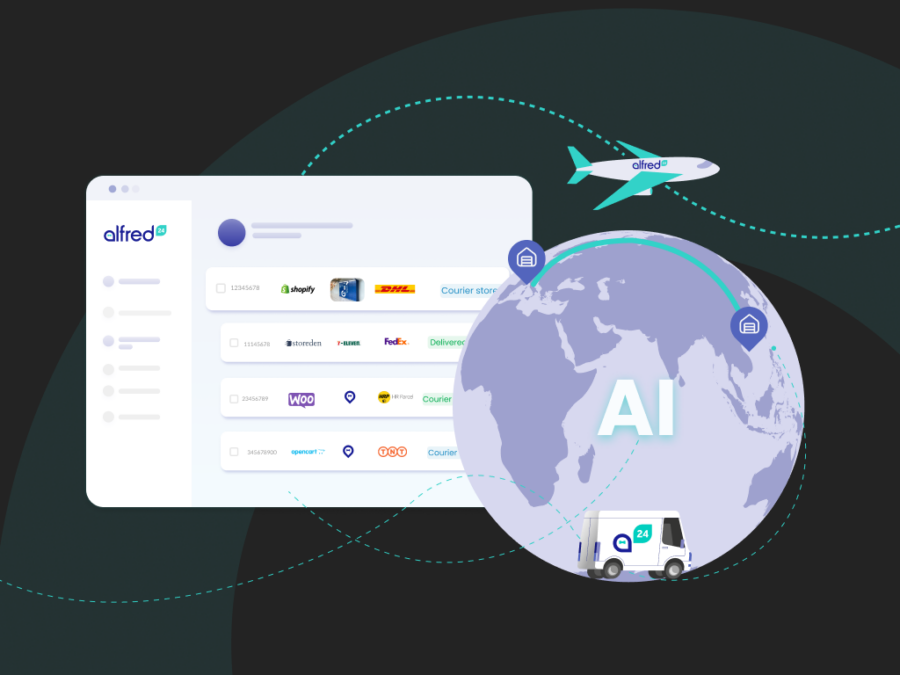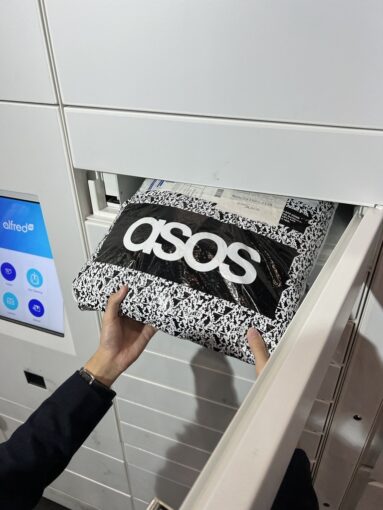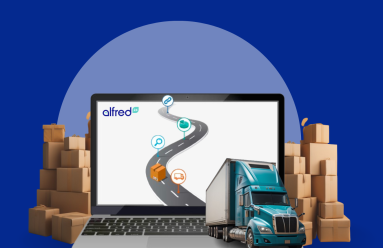Using AI to Enhance Shipping Visibility

In today’s fast-paced world, businesses are always seeking ways to improve their operations and stay ahead of the competition.
One area that has become increasingly important is shipping visibility.
Shipping visibility refers to the ability to track goods and shipments in real-time.
Providing businesses and customers with accurate information on the location and status of their orders.
In this article, we will explore how AI is used to improve shipping visibility, its benefits, and potential drawbacks.
Introduction
The shipping industry is undergoing a significant transformation, with increased competition and customers demanding faster and more efficient services.
In such an environment, shipping visibility has become critical for businesses that want to maintain a competitive edge.
AI has emerged as a technology that can help businesses improve their shipping visibility and meet the expectations of their customers.
What is Shipping Visibility?
Shipping visibility refers to the ability to track shipments in real-time.
It involves monitoring the location of goods, their movement, and the status of their delivery.
Shipping visibility provides businesses and customers with accurate information on the whereabouts of their orders.
Enabling them to plan and coordinate their operations efficiently.
Why is Shipping Visibility Important?
Shipping visibility is vital for businesses in several ways.
First, it allows businesses to keep track of their shipments, reducing the risk of lost or stolen goods.
Second, it helps businesses plan and coordinate their operations more efficiently, improving their overall productivity.
Third, shipping visibility enhances customer satisfaction by providing accurate information on the status of their orders.
Reducing the chances of delays and missed deliveries.
AI in Shipping Visibility: How it Works
AI is a technology that can process vast amounts of data quickly and accurately.
In shipping visibility, AI is used to analyse data from various sources, such as GPS, weather reports, and traffic patterns.
The AI algorithms can identify potential issues or bottlenecks in the shipping process and provide solutions to mitigate them.
AI can also predict delivery times accurately and alert businesses and customers if there are any delays.
Benefits of Using AI for Shipping Visibility
The use of AI in shipping visibility has several benefits for businesses.
- it provides real-time information on the location and status of shipments, allowing businesses to make timely decisions.
- AI can help businesses optimize their shipping routes, reducing transportation costs and improving delivery times.
- AI can help businesses predict and mitigate potential issues, such as weather conditions or traffic jams, that could impact their shipments.
- AI can improve customer satisfaction by providing accurate and timely information on the status of their orders.

Challenges of Implementing AI in Shipping Visibility
While AI has significant potential to enhance shipping visibility, there are several challenges that businesses must address when implementing this technology.
Data Quality and Quantity
The success of AI algorithms in shipping visibility depends on the quality and quantity of data available.
Businesses must ensure that their data is accurate, relevant, and up-to-date.
They must also ensure that they have access to enough data to train their algorithms effectively.
This can be a challenge, especially for smaller businesses with limited resources.
Integration with Existing Systems
Many businesses already have existing systems in place for managing their shipping operations.
Integrating AI algorithms into these systems can be a complex and time-consuming process.
Businesses must ensure that their existing systems can communicate with the AI algorithms effectively and that there are no compatibility issues.
Cost
The implementation of AI technology can be costly, especially for small and medium-sized businesses.
The cost of hardware, software, and personnel can be prohibitive, and businesses must weigh the potential benefits of AI against the cost of implementation.
Data Privacy and Security
AI algorithms rely on vast amounts of data, much of which is sensitive and confidential.
Businesses must ensure that their data is secure and protected from unauthorized access.
They must also ensure that they comply with data privacy regulations, such as GDPR and CCPA.

Overcoming the Challenges
To overcome the challenges of implementing AI in shipping visibility, businesses must take a strategic and holistic approach.
They must:
- Invest in high-quality data management systems to ensure the accuracy and relevance of their data.
- Develop a comprehensive integration plan that takes into account existing systems and potential compatibility issues.
- Conduct a thorough cost-benefit analysis to determine the potential return on investment of AI implementation.
- Implement robust data privacy and security protocols to protect sensitive data.
By taking these steps, businesses can overcome the challenges of implementing AI in shipping visibility and unlock the full potential of this technology.
Case Studies: Examples of AI in Shipping Visibility
Several companies have implemented AI technology to enhance their shipping visibility.
For example, FedEx uses AI algorithms to optimize its delivery routes and predict delivery times accurately.
Future of AI in Shipping Visibility
The use of AI in shipping visibility is still in its early stages, but there is tremendous potential for growth and innovation.
In the future, AI algorithms will become even more sophisticated and capable of processing vast amounts of data in real-time.
This will enable businesses to optimize their shipping operations further and improve their customer service.
One area of growth for AI in shipping visibility is the use of predictive analytics.
Predictive analytics can analyze historical data to predict future events, such as shipping delays or potential bottlenecks.
This can help businesses plan and coordinate their operations more effectively and reduce the risk of delays and errors.
Another area of growth is in the use of AI-powered autonomous vehicles.
Autonomous vehicles can transport goods without human intervention, reducing the risk of accidents and improving delivery times.
Autonomous vehicles equipped with AI algorithms can also optimize their routes and make real-time adjustments based on traffic conditions and weather patterns.
Conclusion
Shipping visibility is critical for businesses that want to remain competitive in today’s fast-paced world.
AI technology has emerged as a powerful tool to enhance shipping visibility, providing businesses and customers with accurate and timely information on the location and status of their shipments.
While AI has several benefits, it also has potential drawbacks that must be considered.
The future of AI in shipping visibility is bright, with the potential for further growth and innovation in predictive analytics, autonomous vehicles, and other areas.
FAQs
What is shipping visibility?
Shipping visibility refers to the ability to track shipments in real-time, providing businesses and customers with accurate information on the location and status of their orders.
How does AI improve shipping visibility?
AI can process vast amounts of data quickly and accurately, analyzing data from various sources to identify potential issues or bottlenecks in the shipping process and provide solutions to mitigate them. AI can also predict delivery times accurately and alert businesses and customers if there are any delays.
What are the benefits of using AI for shipping visibility?
The use of AI in shipping visibility provides businesses with real-time information on the location and status of their shipments, allowing them to make timely decisions. AI can also help businesses optimize their shipping routes, reduce transportation costs, predict and mitigate potential issues, and improve customer satisfaction.
What are the potential drawbacks of AI in shipping visibility?
The implementation of AI technology can be costly, and reliance on AI could lead to a loss of human oversight, which could result in errors or delays. There are also concerns about data privacy and security.
What is the future of AI in shipping visibility?
The future of AI in shipping visibility is bright, with the potential for further growth and innovation in predictive analytics, autonomous vehicles, and other areas.


